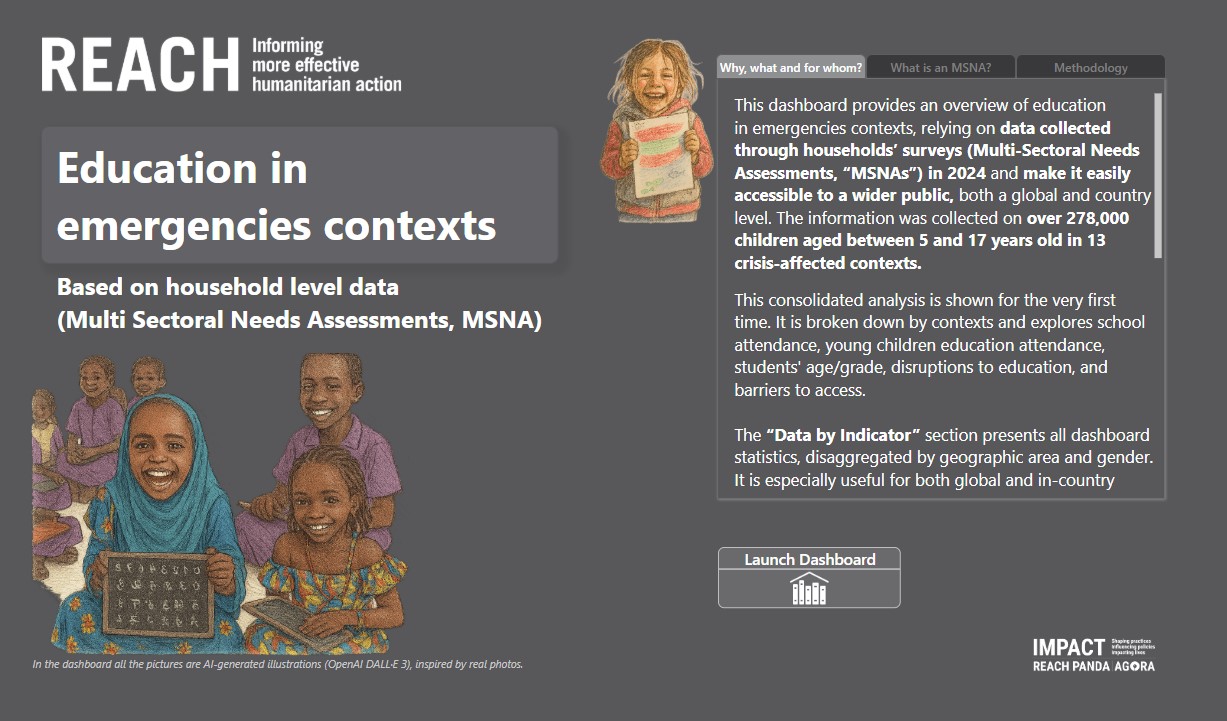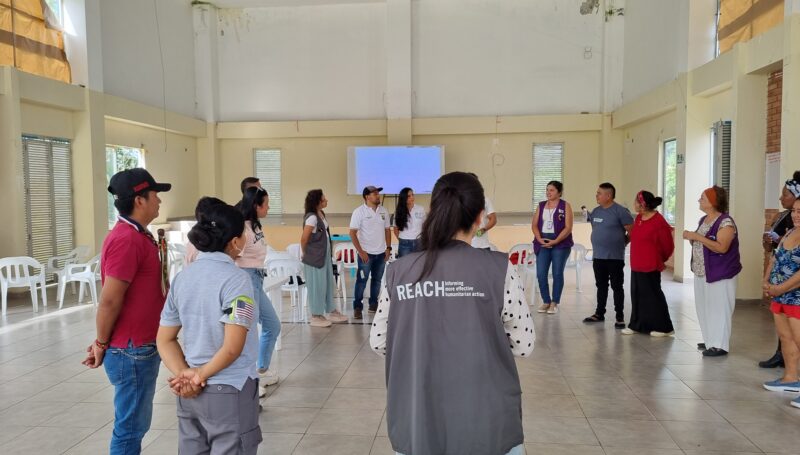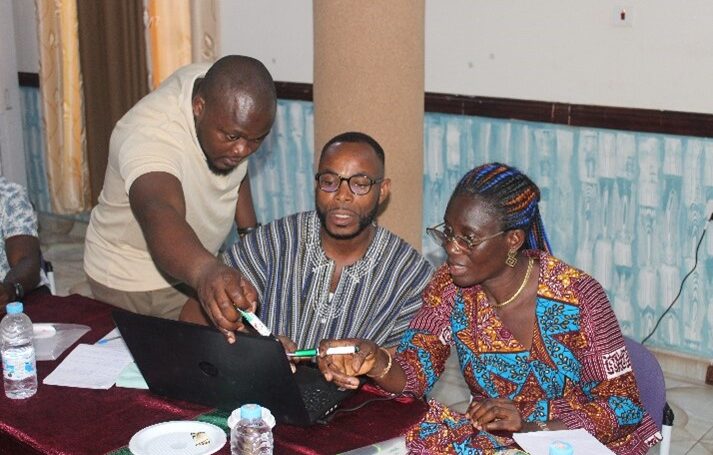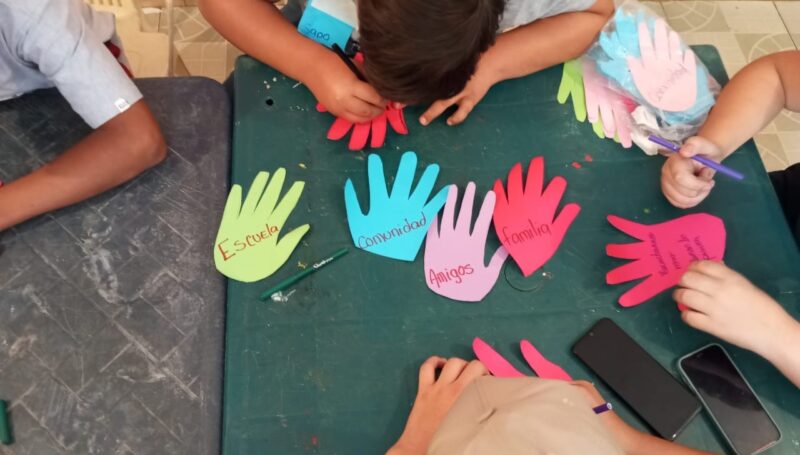For the first time, IMPACT – through its initiative REACH – used data collected in 15 crisis-affected contexts to explore how education needs are impacted.
Findings are accessible through a dashboard, providing an overview of education in emergencies contexts, relying on data collected through households’ surveys (Multi-Sectoral Needs Assessments, “MSNAs”) in 2024. The information was collected on over 331,000 children aged between 5 and 17 years old in 15 crisis-affected contexts. These data collections aimed at providing statistically representative results of the 125 million of school-aged children residing in these humanitarian contexts1. This consolidated analysis is shown for the very first time and explores school attendance, access interruption, educational delays and barriers of access to education in 13 contexts2. It is particularly useful for both global and in-country actors who are looking for granular statistics to inform their prioritization, planning and advocacy in their areas of intervention.
This global analysis reveals that in crisis-affected contexts, the SDG 4 « Ensure inclusive and equitable quality education and promote lifelong learning opportunities for all » is far from being met. In the contexts studied, data shows that gaps in access to basic education begins at an early age and widened over time. In parallel, educational delays are mounting up.
Education needs are driven globally by a cascade of new, continuing, recurring and often overlapping crises. While teachers are essential to upholding children’s right to quality education, they are themselves directly affected and often experience delayed, irregular, or insufficient compensation. This leads to demotivation, absenteeism, and destabilization of educational systems. In the 13 contexts studied3, about 12 million in-school children have seen their education disrupted at some point during the 2023-2024 school year due to teachers’ absence. Natural hazards including droughts, floods, and wildfires have jeopardized the education of more than 10 million children and are projected to occur more frequently in the coming years. In 2024, displacement and conflict have also severely endangered the continuity of education. According to the households surveyed, the occupation of schools by armed groups has disrupted the access to education of more than 1,4 million children at some point during the year, while twice as many have seen their access to school interrupted as these latter were used as a shelter by displaced populations.
Alarmingly, just under one third of the school-aged population residing in the areas covered by the MSNAs were fully denied their right to access education. Direct, indirect and opportunity costs of schooling is depriving more than 14,1 million children access to basic education. Girls and children with disabilities, together with many other vulnerable groups including but not limited to displaced population are disproportionately affected in many crisis contexts. At least 690K school-aged children could not enroll in school on the sole basis of lack of documentation or recent displacement.
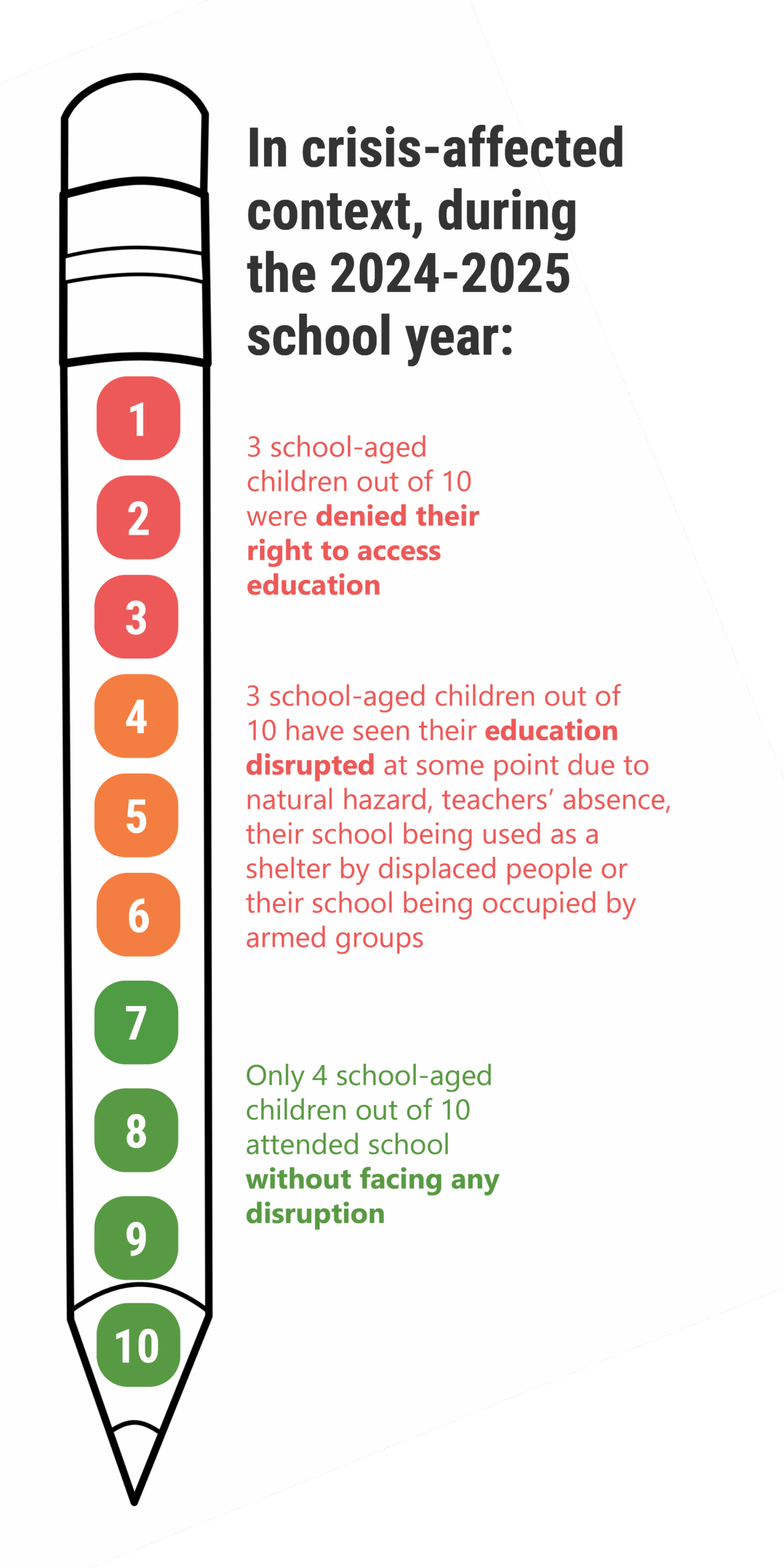
Education in emergencies is a protective intervention and a hub for other humanitarian interventions, including access to school feeding and nutrition, water and sanitation facilities, vaccines and other health services, as well as general psychosocial support to manage the trauma experienced in crisis-affected environments. Quality education is also one of the most powerful investments for sustainable development. It reduces poverty, drives economic growth, improves health and gender equality, and promotes peace.
A key learning of this dashboard is to recall that national/crisis wide statistics only provide a partial indication of the educational situation of the children caught up in emergencies. Lesser or greater pockets of severe lack of severe education needs and associated protection risks were noted in every crisis-affected context.
While structural lack of investment in education systems is today worsened by the global humanitarian and development funding cuts, adopting a local and intersectional lens is more essential than ever to capture the needs of the most vulnerable children and inform an appropriate and targeted education response. This dashboard will be updated as the 2025 MSNA data becomes available.
For any questions or interest, please contact [email protected]
[1] All the figures in this article were calculated based on context-wide OCHA population figures, adjusted to represent the 5 to 17 years old population. The population residing in the crisis-affected parts of Uganda and Kenya have not been included in these figures.
[2] Two crisis-affected contexts have been excluded from this publicly available dashboard due to their sensitivity.
[3] The following global statistics do not include the school-aged population who resides in the crisis-affected parts of Uganda and Kenya but consider the two additional crisis-affected contexts, whose results are not publicly shared.







